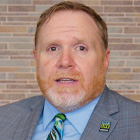
Presented by Jeremy Zeiders, PSL/donor family supports coordinator at Center for Organ Recovery & Education (CORE)
April is National Donate Life Month (NDLM), a month commemorating those who have received transplants, recognizing those who continue to wait, honoring donors and donor families, and thanking registered donors for giving hope.
Let’s talk about organ donation by the numbers. How many people across the nation are waiting for a transplant?
CORE’s goal is to end the deaths of those on the transplant waiting list while maintaining integrity for the donation process, dignity for the donors, and compassion for their families. The number of people across the country waiting for a lifesaving transplant is 100,000. In West Virginia, that number is approximately 500 people.
How often are people added to the national transplant waiting list?
Every 10 minutes, someone is added to the national transplant waiting list. Unfortunately, approximately 20 people die each day waiting for an organ transplant. Although 90% of Americans say they support organ, tissue, and cornea donation, only 30% know the essential steps to become a donor. However, a single donor can save up to eight lives.
If 100,000 people are waiting for a transplant, how many are awaiting tissue and cornea transplants?
In addition to organ donation, there are also tissue and cornea transplants; 250,000 people await tissue and cornea transplants daily. Seventy-five lives can be either saved or healed by a single organ, tissue, and cornea donor.
This National Donate Life Month, we ask the public to be part of this interconnected, life-sustaining community by registering as an organ, tissue, and cornea donor; and championing the Donate Life cause. Visit core.org/register and enter the necessary registration information online. It only takes about a minute.
Continue learning about the gift of organ donation in Part 1 and Part 2.
Please note, the information provided throughout this site is not intended or implied to be a substitute for professional medical advice, diagnosis, or treatment. All content, including text, graphics, images, and video, on or available through this website is for general information purposes only. If you are experiencing related symptoms, please visit your doctor or call 9-1-1 in an emergency.